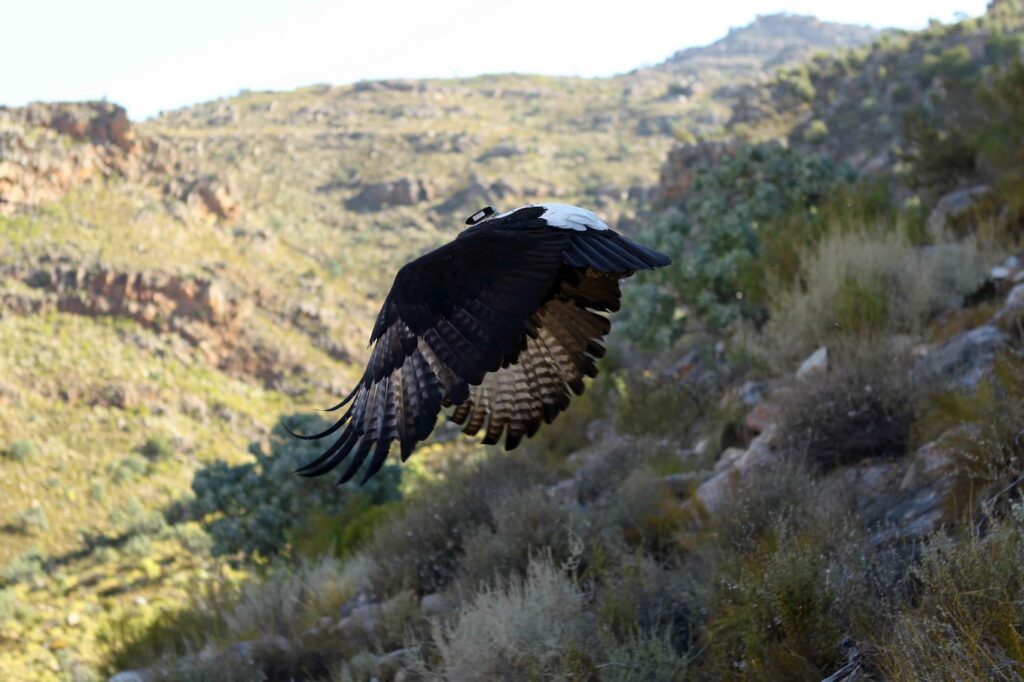
The Verreaux’s eEagle Aquila verreauxii occurs through most parts of sub-Saharan Africa where suitable mountainous habitat correlates with availability of their main prey, the Rock hyrax Procavia capensis. The Western Cape of South Africa appears to be a breeding stronghold for the Verreaux’s Eagle. However, in some parts of the country their long‐term survival might be threatened by radical change in land‐use. In the Sandveld at present these eagles remain prevalent and breeding. However, this area is now classed as the second most highly threatened ecosystem in South Africa and invariably more than 50% of the land has been converted and irrigated for potato farming (C.A.P.E. 2008; Low 2004). While the Verreaux’s Eagle currently continues to breed successfully, the widespread habitat loss has lead to questions including:
- Can this normally prey-specific predator (usual diet consists of >70% Rock hyrax Procavia capensis) diversify its diet?
- Do eagles in the Sandveld have to forage further, have larger home ranges or spend more time and effort hunting compared to those found in a relatively pristine habitat?
- Can we use behavioural differences of eagles hunting in differentially altered habitats to predict the future persistence of this species?

To help answer these questions we deployed UVA-BiTS GPS loggers on eagles in the Cederberg Mountains, a pristine mountain area, and the Sandveld. In April 2012 the first eagle was tagged for this study. After only 1 week of data we were already seeing a small home range and interesting flight patterns. With the help of good solar conditions in South Africa we recorded high-resolution GPS data every 3 seconds for the purpose of looking at behavioural and land use differences between two groups of Verreaux’s Eagles.
More information can be found on: blackeagleproject.blogspot
Contact persons, funders and participants
Megan Murgatroyd blackeagle@capeleopard.org.za
Prof. Les Underhill les.underhill@uct.ac.za
The Animal Demography Unit, The University of Cape Town http://adu.org.za
Willem Bouten, Universiteit van Amsterdam w.bouten@uva.nl
The Cape Leopard Trust

